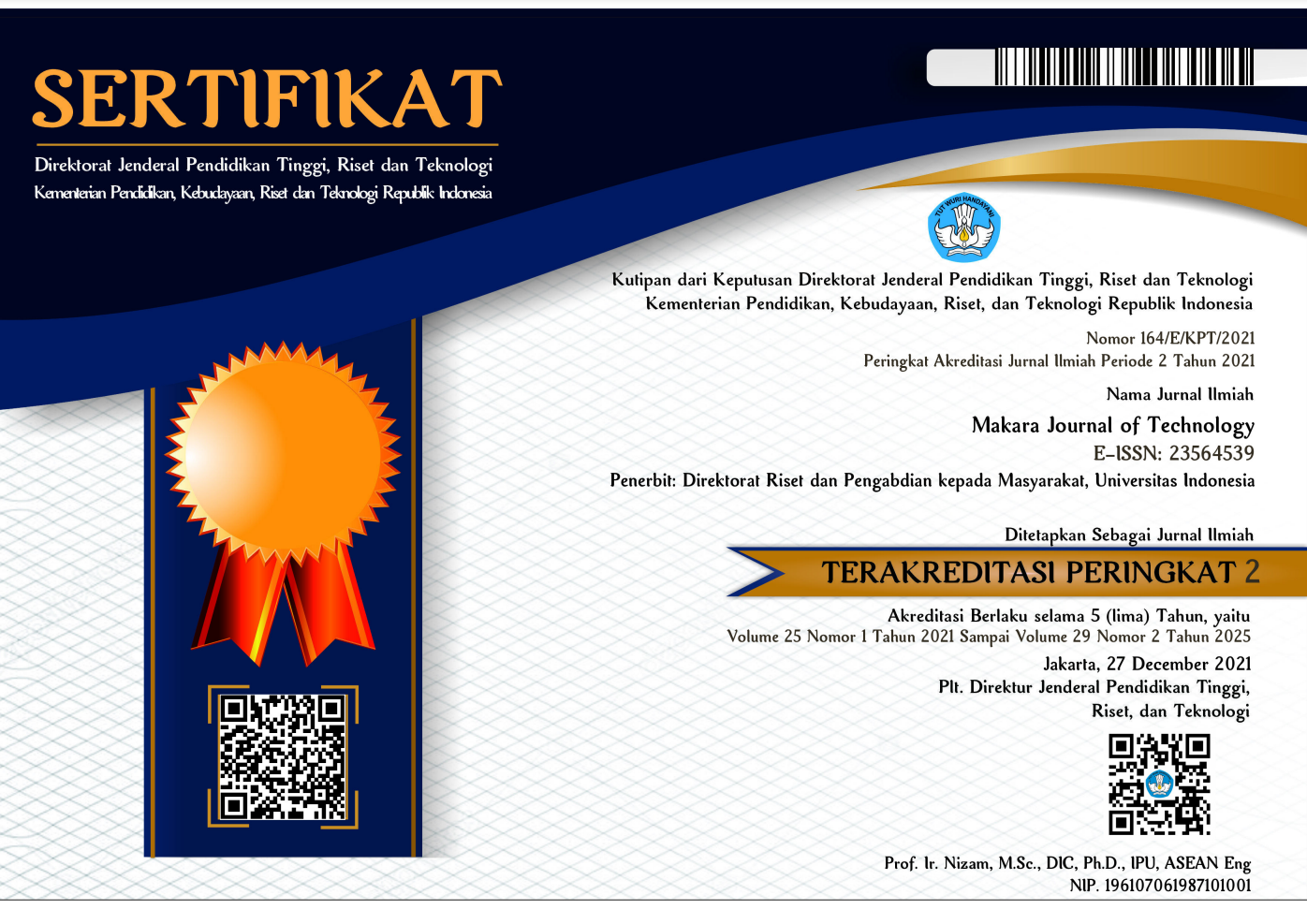Abstract
It was reported that the extracts of papaya leaves could inhibit the growth of Rhizopus stolonifer. Antibacterial activity of Carica papaya leaf extracts on pathogenic bacteria was observed in this study. Papaya leaves were extracted by using maceration method and three kinds of solvents: ethanol, ethyl acetate, and hexane. Papaya leaf extracts were tested against Bacillus stearothermophilus, Listeria monocytogenes, Pseudomonas sp., and Escherichia coli by agar diffusion method. The objectives of this study were to determine extract ability against pathogenic bacteria, to observe the influence of pH, NaCl, and heat on extracts ability, and to observe extract ability against B. stearothermophilus spores. The data showed that ethyl acetate extract could inhibit B. stearothermophilus, L. monocytogenes, Pseudomonas sp., and E. coli. The extract activity was influenced by pH, and it was more effective in low pH. The extract activity was influenced by NaCl against B. stearothermophillus and E. coli. However, it was not influenced by NaCl in bioassay against L. monocytogenes and Pseudomonas sp. The extract activity was influenced by heating process against all the bacteria tested. The extracts inhibited B. stearothermophilus spores as well. Papaya leaves are potential natural anti-bacteria, which might be used in certain kinds of food.
References
G. Dawkins, H. Hewitt, Y. Wint, P.C. Obiefuna, B. Wint, West Indian Med. J. 52 (2003) 209.
T.O. Fakeye, T. Oladipupu, O. Showande, Y. Ogunremi, Trop. J. Pharm. Res. 6 (2007) 671.
B.S. Nayak, L.P. Pereira, D. Maharay, Indian J. Exp. Biol. 45 (2007) 739.
J.H. Doughari, A.M. Elmahamood, S. Manzara, Afr. J. Microbiol. Res. 37 (2007) 41.
G. Yismaw, B. Tessema, A. Mulu, M. Trruneh, Ethiop. Med. J. 46 (2006) 71.
I.I. Anibijuwon, A.O. Udeze, Ethnobotanical Leaflets 13 (2009) 850.
Rukmana, H. Rahmat, Seri Budi Daya: Pepaya, Penerbit Kanisius, Yogyakarta, 1995, p.77.
A. Canini, A. Daniela, G. D’Arcangelo, P. Tagliatesta, J. Food Compos. Anal. 20 (2007) 19.
K. Suresh, P. Deepa, R. Harisaranraj. V.V. Achudhan, Ethnobiological Leaflet 12 (2008) 1184.
N. Srivastava, S.S. Bhagyawant, V. Sharma, J. Pharm. Res. 3 (2010) 3132.
A.S. Naidu, Natural Food Antimicrobial Systems, CRC Press, New York, 2000, p.818.
K. Heyne, Tumbuhan Berguna Indonesia, Badan Litbang Kehutanan, Jakarta 1988. p.2521.
A.L. Brannen, P.M. Davidson, S. Salminem, Food Additives, Macel Dekker Inc., New York, 1990, p.296.
S. Banos, M. Bautista, J.C. Hernandez-Lopez, Diaz-Perez, C.F. Cano-Ochoa, J. Postharvest Biol. Technol. 20 (2000) 18.
O.C. Nwinyi, A.B. Anthonia, Afr. J. Agric. Res. 5 (2010) 1531.
A. Parhusip, Disertasi Pascasarjana, Sekolah Pascasarjana, Institut Pertanian Bogor, Indonesia, 2006, p.123.
W.A. Volk, M.F. Wheeler, Basic Microbiology, Willey, New York, 1984, p.686.
B.L. Batzing, Microbiology, an Introduction, Thompson Learning Inc., New York, 2002. p.780.
M.T. Madigan, H.M. Martinko, J. Parker, Brock Biology of Microorganisms, Pearson Prentice Hall,
Southern Illinois, 2006, p.1056.
L.M. Prescott, J.P. Harley, D.A. Klein, Microbiology, 5th ed., McGraw Hill, New York, 2003, p.026.
F.C. Tenover, The American J. of Medicine 119 (2006) 3.
Ardiansyah, Tesis Pascasarjana, Sekolah Pascasarjana, Institut Pertanian Bogor, Indonesia,
, p.143.
J.M. Jay, Modern Food Microbiology, 5th ed., Chapman and Hall, New York, 2000, p.697.
R.K. Robinson, In: R.K. Robinson, C.A. Batt, P.D. Patel (Eds.), Encyclopedia of Food Microbiology, vol. 2, Academic Press, New York, 2000, p.2372.
Recommended Citation
Romasi, Elisa Friska; Karina, Jessica; and Parhusip, Adolf Jan Nexson
(2011)
"Antibacterial Activity of Papaya Leaf Extracts Against Pathogenic Bacteria,"
Makara Journal of Technology: Vol. 15:
Iss.
2, Article 12.
DOI: 10.7454/mst.v15i2.936
Available at:
https://scholarhub.ui.ac.id/mjt/vol15/iss2/12
Included in
Chemical Engineering Commons, Civil Engineering Commons, Computer Engineering Commons, Electrical and Electronics Commons, Metallurgy Commons, Ocean Engineering Commons, Structural Engineering Commons



